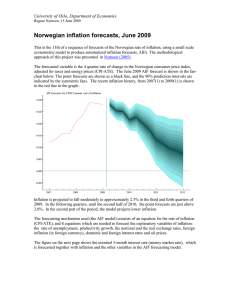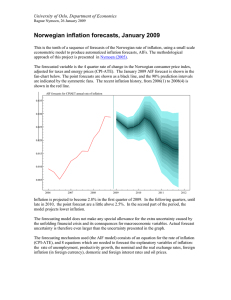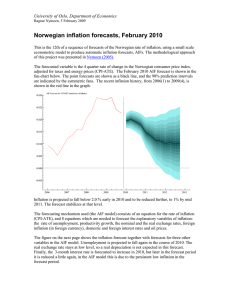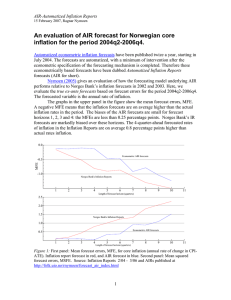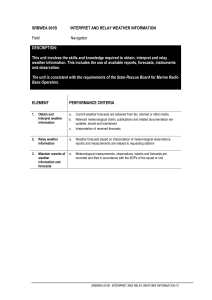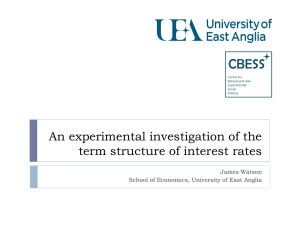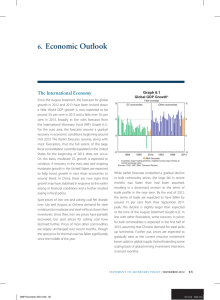Capital Market Expectations
advertisement
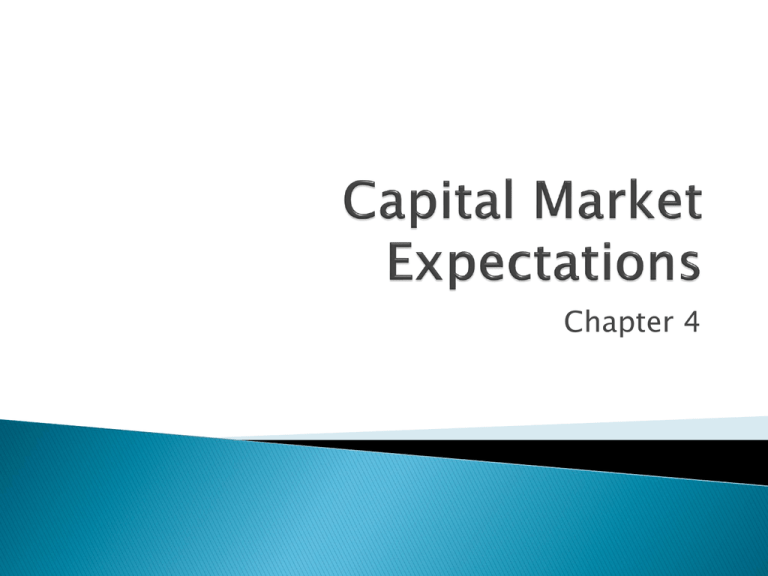
Chapter 4 Discuss the role of capital market expectations in the portfolio management process Review a framework for setting capital market expectations Identify and discuss the following as they affect the setting of capital market expectations: The limitations of economic data Data measurement errors and biases The limitations of historical estimates Ex post risk as a biased measure of ex ante risk Biases in analysts’ methods The failure to account for conditioning information ◦ The misinterpretation of correlations ◦ Psychological traps ◦ Model uncertainty ◦ ◦ ◦ ◦ ◦ ◦ Explain the use of survey and panel methods and judgment in setting capital market expectations Distinguish between the inventory cycle and the business cycle Identify and interpret business cycle phases and their relationship to short- and longterm capital market returns Review the relationship of inflation to the business cycle and characterize the relationship between inflation/deflation and cash, bonds, equity, and real estate Distinguish between business cycles and economic growth trends and demonstrate the application of business cycle and economic growth trend analysis to the formulation of capital market expectations Identify and interpret the components of economic growth trends and explain how governmental policies and exogenous shocks can affect economic growth trends Identify and interpret macroeconomic and interest and exchange rate linkages between economies Evaluate how economic and competitive factors affect investment markets, sectors, and specific securities Recommend and justify changes in the component weights of a global investment portfolio based on trends and expected changes in macroeconomic factors Capital market expectations are the investor’s expectations concerning the risk and return prospects of various asset classes (macro) as opposed to specific assets (micro) Essential input to formulating a strategic asset allocation Specify the final set of expectations needed, including the time horizon to which they apply Research the historical record Specify the method(s) and/or model(s) that will be used and their information requirements Determine the best sourced for information needs Interpret the current investment environment using the selected data and methods, applying experience and judgment Provide the set of expectations that are needed, documenting conclusions Monitor actual outcomes and compare them to expectations, providing feedback to improve the expectations-setting process Analyst must understand definition, construction, timeliness and accuracy of any data used, including biases Time lag can be an impediment to use Data are frequently revised by collecting officials Definitions and calculation methods change over time Data collectors often re-index, introducing the risk of mixing data indexed to different bases Transcription errors – errors in gathering and recording data (most serious if they reflect a bias) Survivorship bias – including only those entities that have survived for the entire measurement period tends to paint an overly optimistic picture Appraisal (smoothed) data – understates volatility and correlation with other assets due to infrequent measurement Things could be different, altering risk/return characteristics ◦ ◦ ◦ ◦ Technological Political Legal and regulatory environments Disruptions (war, natural disaster) Such regime changes result in nonstationarity – differing underlying properties during different parts of a time series Amount of data needed for statistical analysis may require a long time series, increasing nonstationarity risk (if the data is even available) Prices at any one time reflect risk factors that may not materialize When the risk fails to materialize, asset prices rise Since the risk did not materialize, it is not incorporated in the ex-ante estimate (i.e. risk is underestimated The return did materialize, so it is incorporated in ex-ante estimates (return is overestimated) Data mining – with enough data there will be random correlations that are not economically meaningful Time period bias – research findings often sensitive to start and end dates for measurement period Anchoring – gives disproportionate weight to the first information received on a topic Status quo – tendency to perpetuate recent observations in forecasts Confirming evidence – giving greater weight to information that supports existing or preferred point of view than to evidence that contradicts it Overconfidence – overestimating accuracy of forecasts Prudence – tempering forecasts to not appear extreme Recallability – forecasts overly influenced by events that left a strong impression on the forecaster’s memory Model uncertainty is the risk that the model is not correct or appropriate Input uncertainty relates to whether the inputs to the model are correct Model and input uncertainty make it difficult to evaluate inefficiencies or market anomalies Discounted cash flow models – expressing current value as discounted value of future cash flows Risk Premium Approach – expresses expected return as risk free rate plus an appropriate risk premium Financial Market Equilibrium Models – describe relationships between expected return and risk in which supply and demand are in balance Survey and panel methods consolidate the opinions of a group of experts Judgment can improve forecasts relative to objective methods Business cycle (9-11 years) – These are generalizations – realize that each of the listed effects do not always happen or do not occur at the same rate or frequency during different cycles across time – also realize that in order to take advantage of the listed occurrences, you must be in the correct stocks or bonds ahead of the phases occurring which means that you must predict the phases ahead of time ◦ Recovery still large output gap bond yields bottoming, stocks often surge risk pays. robust growth without inflation Rising capacity utilization and profits Short rates start rising, long rates stable Output gap closed, danger of overheating Inflation starts to pick up Rising interest rates, stock markets rising but volatile Slowing economy, sensitive to shocks Peaking interest rates Interest sensitive stocks perform best Declining GDP Falling short-term interest rates and bond yields Stock market bottoms early and begins to rise ahead of business cycle recovery ◦ Early upswing ◦ Late upswing ◦ Slowdown ◦ Recession Consumers Business Monetary policy ◦ 60-70% of GDP so typically the most important factor ◦ Monitor retail sales and personal income ◦ Smaller but more volatile ◦ Monitor surveys such as ISM, PMI ◦ Mechanism for intervening in cycle ◦ Watch inflation, pace of growth, unemployment and capacity utilization Emerging countries are catching up economically Need higher investment rates in physical and human capital If domestic savings are inadequate foreign capital is needed More volatile political and social environments Many need major structural reform to unlock potential Tend to be commodity-driven or have expertise in a narrow industrial range How sound are fiscal and monetary policy What are the economic growth prospects Is the currency competitive, and are external accounts under control Is external debt under control Is liquidity plentiful Is political situation supportive of required policies econometric models approach ◦ advantages ◦ disadvantages leading indicator based approach ◦ advantages ◦ disadvantages checklist approach ◦ advantages ◦ disadvantages
